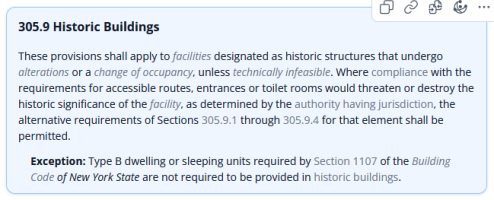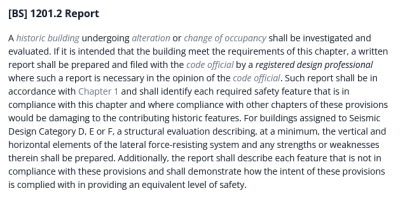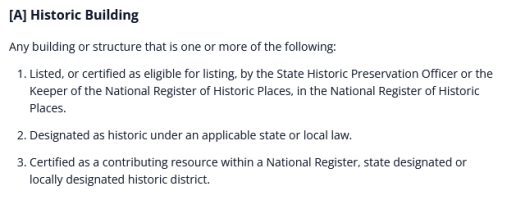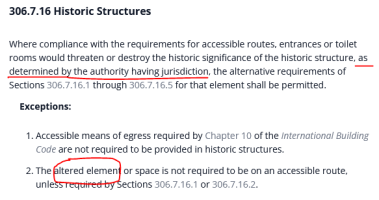You are in New York. New York's IEBC section 306 addresses energy storage systems, and it ends with section 306.1. Are you saying the project is in Connecticut? If so, the IEBC as adopted in Connecticut requires a report, under section 1201.2. Adding a second floor in a historical building usually would result in loss of the historic classification. Has the report been prepared, submitted, and approved by the local building official?
View attachment 17004
Next, "historic building" is a defined term. The definition is:
View attachment 17006
Not every old building (regardless of how old) is a "historic" building within the purview of the IEBC. What recognized agency or body has officially designated the building as historic, and have they formally stated that adding a second floor will not cancel the historic building classification/designation?
Next, you are pinning your hopes on section 306.7.16. But ... section 306.7 -- ALL of section 306.7 -- addresses alterations, and it appears that 306.7.16 addresses alterations, not additions.
View attachment 17007
Additionas are addressed in section 306.6:
View attachment 17009
So now you have to look at section 306.7.1 (not 306.7.16), in addition to complying with requirements for new construction (meaning the IBC):
View attachment 17010
As new construction, the addition is subject to the accessibility provisions of IBC Chapter 11. The exception is stories containing less than 3,000 square feet. At 5,500 square feet, yours is mus too large to escape required accessibility.






